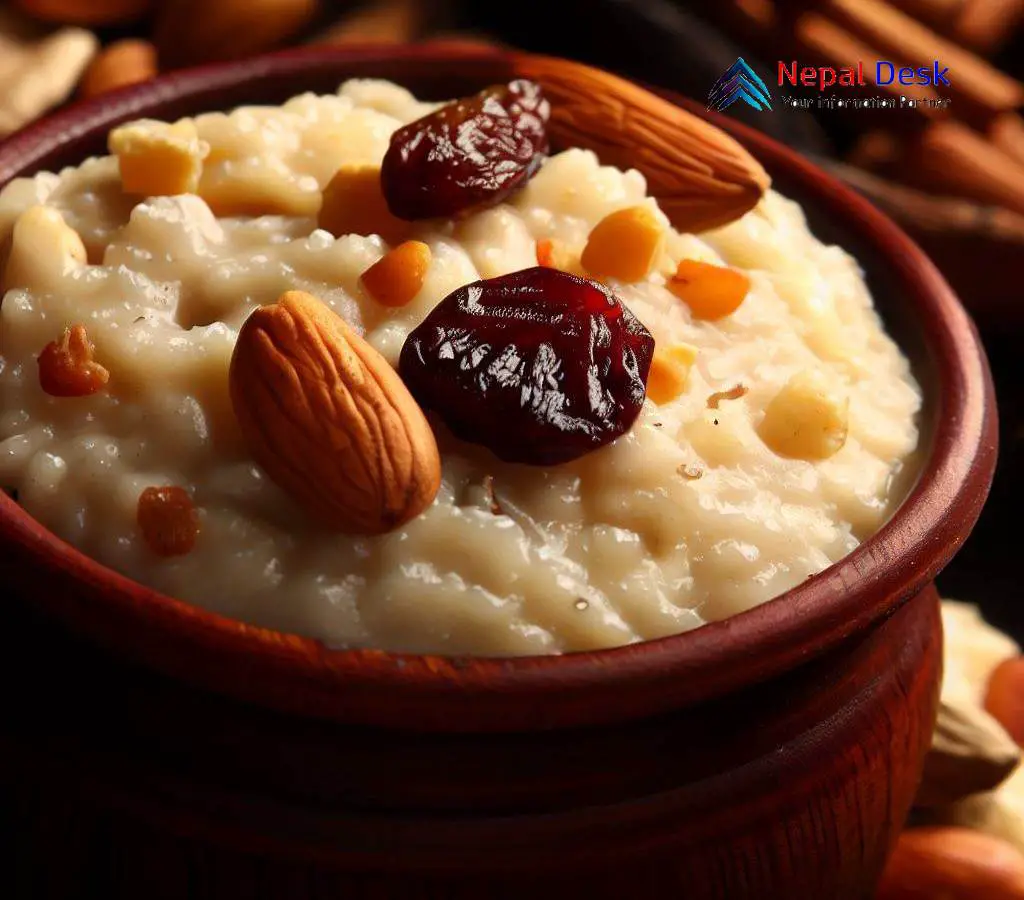Kheer Khani Din: Nepal's Tribute to the Timeless Rice Pudding
Published Date

Published Date
Uncover the story of Kheer, the cherished rice pudding of Nepal, celebrated on Kheer Khani Din. Explore its cultural significance and global variations.
⏱ 4 min read
During the heart of the monsoon season, as Nepal's paddy fields are painted with vibrant shades of green, a special day is known as Kheer Khani Din unites the nation through a delicious tradition. Celebrated on Shrawan 15 of the Nepali calendar (approximately July 30/31), this day honors Kheer, a beloved rice pudding dessert.
Kheer, comprising milk, sugar, and rice boiled together to create a creamy delight, is an integral part of Nepali culinary culture. The dish captivates people regardless of age or background, "Kheer Khani Din: steps into the limelight as an emblem of cultural pride and social unity.
Rooted within Nepal's agricultural practices, Kheer Khani Din's origins can be traced back to Shrawan – the fourth month of the Nepali calendar which marks the commencement of rice planting. As new seeds populate the fields, surplus rice stocks are used to prepare Kheer – symbolizing a prayer for abundance and prosperity in the coming harvest.
Across Nepal on this day, families come together to prepare the sweet treat, their homes infused with the delightful aroma of simmering milk and rice. Cardamom often lends added flavor to the dish which is garnished with dried fruits for an extra touch of indulgence.
A Culinary Testament to Cultural Harmony and Prosperity
Central to Nepal's culinary heritage, Kheer is renowned for its simplicity - marrying just rice, milk, and sugar - reflecting both elegance and rich tradition. Prepared using short-grain rice that lends a creamy texture to the pudding, Kheer's unique taste is brought alive with cardamom while other iterations may include nutmeg or saffron. Finally adorned with almonds, cashews, or raisins for additional crunchiness and flavor, Kheer's unassuming composition is truly celebrated during Kheer Khani Din.
Sharing this scrumptious dessert with friends, neighbors, and those in need reinforces values of generosity and community spirit. The act of offering Kheer brings joy and blessings, strengthening ties and fostering a sense of unity amongst the people.
By observing Kheer Khani Din during rice planting season, Nepal demonstrates immense gratitude and respect for its agricultural roots. Enjoying Kheer on this day serves as both a prayer for a prosperous harvest and an expression of appreciation for the previous year's yields.
As we partake in Kheer Khani Din's festivities, let us not only savor the delightful taste of Kheer but also cherish the cultural richness and social harmony it encapsulates. Every spoonful of this dessert is a reminder of Nepal's vibrant heritage and the shared values that bring its people together.
The Global Appeal of Kheer
Though deeply cherished in Nepal, it is fascinating to note that variations of Kheer have made their way into other countries as well.
In Indian celebrations, Kheer features a staple dessert called Payasam in South India and may incorporate vermicelli or jaggery as alternative ingredients. Some regions also include coconut milk for a unique twist.
Kheer is a celebrated dessert in Pakistan and Bangladesh too; prepared similarly to Nepali and Indian versions but garnished with pistachios and rosewater for a touch of aromatic elegance.
Iran has its own rendition called Sholeh Zard - a saffron-flavored Persian rice pudding that boasts a vivid yellow hue. Traditionally enjoyed during religious occasions, it is often embellished with cinnamon and almonds for added appeal.
In the Western world, a dessert closely resembling Kheer has captured the hearts of many - rice pudding. Although its primary ingredients echo those of Kheer, comprising rice, milk, and sugar, the flavor profile often ventures into uncharted territory. The inclusion of vanilla is a widespread practice, and the delectable dish is frequently dusted with cinnamon or nutmeg shavings. Some recipes even call for the addition of raisins or other dried fruits.
Kheer's underlying significance as a unifying dish remains constant despite these variations in preparation and taste. A true embodiment of togetherness, this sweet delicacy marks the conclusion of meals and symbolizes festivity and happiness. From Kheer Khani Din in Nepal to jubilant events across India, Pakistan, Bangladesh, and Iran or a simple family supper in Western nations, both Kheer and rice pudding add a dash of sweetness that transcends all borders.
